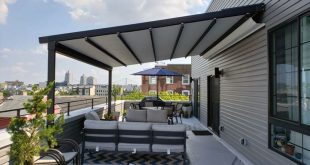In today’s home renovation landscape, open-concept living spaces are all the rage. Walls that once defined rooms are being removed to create larger, more versatile areas perfect for modern lifestyles. However, one major obstacle often stands in the way of these transformations: load-bearing walls. These walls play a crucial role in a home’s structure, but with innovative removal techniques, they no longer need to be an insurmountable barrier to your dream home.
This article dives into the top techniques used by professionals to remove load-bearing walls, providing insight into the benefits, considerations, and challenges that come with this bold renovation move.
What is a Load-Bearing Wall?
A load-bearing wall is an essential structural component of a building, designed to support the weight of the roof, upper floors, or both. Unlike non-load-bearing (partition) walls, which serve only to divide rooms, load-bearing walls carry the force of gravity and distribute it across the foundation. They are often positioned along the central axis of a house or beneath the roof beams.
Understanding the role of a load-bearing wall is the first step in planning any removal. This is not a decision that should be taken lightly, as improper removal could lead to catastrophic structural damage.
Why Remove a Load-Bearing Wall?
Expanding Living Spaces
One of the primary reasons homeowners opt to remove load-bearing walls is to create a more open, expansive living area. By eliminating walls, homes gain a spacious feel that allows for flexible use of space and better flow between rooms. The rise in popularity of open-concept kitchens and living areas has fueled a demand for this type of structural change.
Increasing Home Value
In addition to improving day-to-day living, removing load-bearing walls can also increase a property’s value. Open layouts are a major selling point for modern homes, often giving them a more luxurious feel. The investment in structural renovation can pay off significantly when it comes time to sell.
Improving Natural Light
Another significant benefit of removing load-bearing walls is the increased distribution of natural light. When fewer walls block the flow of light, homes feel brighter and more welcoming. This not only enhances the aesthetic appeal but also promotes energy efficiency by reducing the need for artificial lighting during the day.
Things to Consider Before Removing a Load-Bearing Wall
Structural Assessment
Before you make any moves to remove a load-bearing wall, it’s crucial to have a professional structural assessment conducted by an engineer or contractor. They will analyze your home’s blueprint, determine whether the wall is essential for the structure’s stability, and suggest the best alternatives to provide support once the wall is removed.
Permits and Regulations
Most municipalities require permits for structural modifications, and removing a load-bearing wall is no exception. It’s essential to familiarize yourself with local building codes and regulations, which often require a licensed professional to handle the job.
Budget and Timeline
Removing a load-bearing wall is a substantial investment. Costs vary depending on the size of the wall, materials, labor, and any additional work that may be needed, such as electrical rerouting or flooring adjustments. It’s wise to plan for unexpected costs, and consult with your contractor about realistic timelines.
Top Techniques for Load-Bearing Wall Removal
Steel Beam Installation
One of the most common and effective methods for load-bearing wall removal is installing a steel beam. Steel beams are incredibly strong and capable of supporting significant loads, making them ideal for replacing a load-bearing wall. Though visible, steel beams can add a sleek, industrial aesthetic to the space if incorporated into the design thoughtfully.
Hidden Beam and Column Techniques
For homeowners looking to maintain a more traditional or seamless look, hidden beams and columns can be installed. This involves placing the new structural support inside the ceiling or walls, ensuring they are not visible after the renovation is complete. While this approach can be more costly and complex, it achieves a polished, unbroken aesthetic that many homeowners desire.
Laminated Veneer Lumber (LVL) Beams
LVL beams are engineered wood products that are gaining popularity due to their strength, durability, and cost-effectiveness. These beams are created by bonding thin wood veneers together under heat and pressure, making them a sustainable and high-performance option for structural reinforcement.
Post and Beam Systems
This method preserves the structural integrity of the home while eliminating the need for entire walls. By using columns (posts) and horizontal beams, this technique supports the weight once borne by the wall, creating open spaces without compromising the building’s stability. Posts can be incorporated into the design as architectural features, adding both aesthetic and structural value.
The Process of Removing a Load-Bearing Wall
Step 1: Consultation and Planning
After the structural assessment, the next step is to consult with your contractor and engineer to plan the wall removal. This includes selecting the type of beam or support structure, planning for temporary supports during construction, and ensuring all permits are secured.
Step 2: Temporary Support Installation
Before the wall can be safely removed, temporary supports (such as a brace or jack system) must be installed. These supports bear the load while the wall is removed and until the permanent beam is in place.
Step 3: Removing the Wall
Once the supports are in place, the process of removing the wall begins. This can involve cutting through drywall, wood studs, and potentially relocating electrical or plumbing systems that may run through the wall.
Step 4: Beam or Column Installation
After the wall is removed, the selected beam (steel, LVL, or other) is installed to replace the structural support. This is often the most critical step, as it requires precision to ensure the beam bears the correct load.
Step 5: Finishing Touches
Once the beam is installed, temporary supports are removed, and the final finishing touches are made. This might include patching drywall, repainting, adjusting flooring, or adding new trim to the ceiling or walls.
Challenges and Solutions
Structural Risks
Removing a load-bearing wall can present risks such as sagging ceilings or uneven floors. These risks can be mitigated by ensuring that the beam or post is properly installed and that all structural calculations are meticulously followed by a professional engineer.
Cost Overruns
It’s not uncommon for unexpected costs to arise during a load-bearing wall removal project. These could include the discovery of electrical or plumbing that needs rerouting, or additional structural support that was not initially anticipated. To combat this, always build a contingency budget into your plan.
Aesthetic Compromises
A challenge many homeowners face is integrating beams or columns into their interior design. Fortunately, with careful planning, these supports can become design features. Exposed beams can lend an industrial or rustic feel, while columns can be wrapped in decorative material to match the room’s aesthetic.
Conclusion
Removing a load-bearing wall is a transformative renovation that can dramatically open up living spaces, increase natural light, and elevate the overall feel of a home. However, it’s also a complex process that requires careful planning, professional guidance, and a significant investment. By using innovative techniques like steel or LVL beams, homeowners can ensure their home remains structurally sound while achieving a modern, open-concept design.
Whether you’re looking to expand your living space, increase your home’s value, or simply bring more light into your home, load-bearing wall removal is an exciting option worth exploring.
FAQs
1. What is a load-bearing wall?
A load-bearing wall supports the structure of a building by carrying the weight of the floors, roof, or other upper elements.
2. How can I tell if a wall is load-bearing?
Load-bearing walls are typically located along the center of a home, under roof beams, or aligned with other walls on different floors. It’s essential to consult a professional to verify.
3. How much does it cost to remove a load-bearing wall?
The cost can range from $2,500 to $10,000 or more, depending on the complexity, materials, and labor involved.
4. Is it safe to remove a load-bearing wall?
Yes, if done properly by professionals who ensure the structural integrity of the home through the installation of beams or posts.
5. How long does it take to remove a load-bearing wall?
The process can take from a few days to a week or more, depending on the complexity of the project and any additional work required.
 Daily Blogger News Stay updated with the latest trends and insights. Your reliable source for daily updates and information.
Daily Blogger News Stay updated with the latest trends and insights. Your reliable source for daily updates and information.







